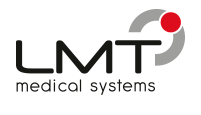GE Healthcare Exhibits AI-Integrated Imaging Solutions at RSNA 2022
|
By MedImaging International staff writers Posted on 26 Nov 2022 |

GE Healthcare (Chicago, IL, USA) is unveiling more than 40 new products and solutions at RSNA 2022 that have been developed to help streamline workflows, advance precision diagnostics and therapeutics, improve patient access, capacity and outcomes.
Today, as radiology departments face challenges in a new era of healthcare, GE Healthcare imaging solutions are designed to support clinicians in meeting competing demands for their time and enable greater focus on patient care. Imaging experts are in short supply and high demand while, at the same time, imaging is moving beyond hospital campuses. By 2033, the U.S. alone could fall short by almost 42,000 of the needed radiologists and other specialist physicians and burnout amongst healthcare professionals is a growing issue. Nearly two-thirds (61%) of radiologists suffer from burnout, up from 36% in 2013 to 49% in 2017. Imaging solutions integrated with artificial intelligence (AI), are aimed at supporting radiologists in meeting these challenges head on, by helping automate complex workload distribution, minimizing workflow steps, optimizing the workforce, and providing improved image quality to reduce scan time.
GE Healthcare’s Intelligent workload management solution is an option for its Picture Archive and Communications System (PACS) solutions, provided by the integration with Helix Radiology Performance Suite, developed by Quantum Imaging & Therapeutic Associates. The innovative intelligent workload management solution, which leverages time-based predictive analytics, can help to optimize the radiologist workforce across an entire enterprise. It is designed to accurately and efficiently predict and distribute workload to the best active radiologist in real-time to enable improved productivity and help to reduce burnout. The solution adapts to the constant fluctuations in imaging volume and radiologist demand to ensure optimal service level performance. Based on impact analysis at Quantum, it enabled a 16.7% improvement in STAT turnaround time (TAT) (18 min to 15 min), 20.5% improvement in ED TAT (32.2. min to 25.6 min) and a 27.7% improvement in inpatient TAT (132.91 min to 96.04 min). These TAT improvements were coupled with up to 21% improvement in work relative value units (wRVU) production per radiologist shift, a common measure of physician productivity often used in determining compensation.
In addition to its PACS solutions, GE Healthcare offers a variety of technology solutions that enhance speed of the radiology workflow, including Imaging 360 for Operations, an ecosystem of applications targeted to specific operational challenges in radiology, and AIR Recon DL, a pioneering, deep-learning based image reconstruction algorithm that improves signal to noise ratio (SNR) and has revolutionized MR imaging, which has benefited nearly 5.5 million patients globally.
Related Links:
GE Healthcare
Latest RSNA 2022 News
- Hologic Showcases Comprehensive Breast and Skeletal Health Solutions at RSNA 2022
- Vieworks Exhibits Complete Lineup of Next Generation X-Ray Flat Panel Detectors at RSNA 2022
- Subtle Medical Showcases AI-Powered Imaging Workflow Solutions at RSNA 2022
- PaxeraHealth Demonstrates the Latest in Artificial Intelligence Technology for Imaging at RSNA 2022
- Varex Presents Advances in X-Ray Technology at RSNA 2022
- Radcal Demonstrates Accu-Gold TOUCH Series for X-Ray QA and Service at RSNA 2022
- Agfa Showcases Groundbreaking, Intelligent Solutions That Empower X-Ray Experts at RSNA 2022
- Philips Demonstrates Smart Connected Imaging and Integrated Workflow Solutions at RSNA 2022
- Bayer Highlights Radiology Portfolio and Innovation in AI at RSNA 2022
- Canon Showcases Meaningful Innovation in its Suite of Solutions and Products at RSNA 2022
- Mindray Debuts New Ultrasound Systems and Hepatology Solutions at RSNA 2022
- Siemens Presents Revolutionary High-End MRI Scanners at RSNA 2022
- 4DMedical Debuts Most Advanced Lung Scanning Technology in Decades at RSNA 2022
- KA Imaging Unveils World’s First Integrated Mobile X-Ray System with Dual-Energy Capabilities at RSNA 2022
- AIRS Medical Showcases Award-Winning MRI Enhancement AI Solution at RSNA 2022
- Alpinion Presents New Range of High-Performance Diagnostic Equipment at RSNA 2022
Channels
Radiography
view channel
Novel Breast Imaging System Proves As Effective As Mammography
Breast cancer remains the most frequently diagnosed cancer among women. It is projected that one in eight women will be diagnosed with breast cancer during her lifetime, and one in 42 women who turn 50... Read more
AI Assistance Improves Breast-Cancer Screening by Reducing False Positives
Radiologists typically detect one case of cancer for every 200 mammograms reviewed. However, these evaluations often result in false positives, leading to unnecessary patient recalls for additional testing,... Read moreMRI
view channel
PET/MRI Improves Diagnostic Accuracy for Prostate Cancer Patients
The Prostate Imaging Reporting and Data System (PI-RADS) is a five-point scale to assess potential prostate cancer in MR images. PI-RADS category 3 which offers an unclear suggestion of clinically significant... Read more
Next Generation MR-Guided Focused Ultrasound Ushers In Future of Incisionless Neurosurgery
Essential tremor, often called familial, idiopathic, or benign tremor, leads to uncontrollable shaking that significantly affects a person’s life. When traditional medications do not alleviate symptoms,... Read more
Two-Part MRI Scan Detects Prostate Cancer More Quickly without Compromising Diagnostic Quality
Prostate cancer ranks as the most prevalent cancer among men. Over the last decade, the introduction of MRI scans has significantly transformed the diagnosis process, marking the most substantial advancement... Read moreUltrasound
view channel
Deep Learning Advances Super-Resolution Ultrasound Imaging
Ultrasound localization microscopy (ULM) is an advanced imaging technique that offers high-resolution visualization of microvascular structures. It employs microbubbles, FDA-approved contrast agents, injected... Read more
Novel Ultrasound-Launched Targeted Nanoparticle Eliminates Biofilm and Bacterial Infection
Biofilms, formed by bacteria aggregating into dense communities for protection against harsh environmental conditions, are a significant contributor to various infectious diseases. Biofilms frequently... Read moreNuclear Medicine
view channel
New SPECT/CT Technique Could Change Imaging Practices and Increase Patient Access
The development of lead-212 (212Pb)-PSMA–based targeted alpha therapy (TAT) is garnering significant interest in treating patients with metastatic castration-resistant prostate cancer. The imaging of 212Pb,... Read moreNew Radiotheranostic System Detects and Treats Ovarian Cancer Noninvasively
Ovarian cancer is the most lethal gynecological cancer, with less than a 30% five-year survival rate for those diagnosed in late stages. Despite surgery and platinum-based chemotherapy being the standard... Read more
AI System Automatically and Reliably Detects Cardiac Amyloidosis Using Scintigraphy Imaging
Cardiac amyloidosis, a condition characterized by the buildup of abnormal protein deposits (amyloids) in the heart muscle, severely affects heart function and can lead to heart failure or death without... Read moreGeneral/Advanced Imaging
view channel
New AI Method Captures Uncertainty in Medical Images
In the field of biomedicine, segmentation is the process of annotating pixels from an important structure in medical images, such as organs or cells. Artificial Intelligence (AI) models are utilized to... Read more.jpg)
CT Coronary Angiography Reduces Need for Invasive Tests to Diagnose Coronary Artery Disease
Coronary artery disease (CAD), one of the leading causes of death worldwide, involves the narrowing of coronary arteries due to atherosclerosis, resulting in insufficient blood flow to the heart muscle.... Read more
Novel Blood Test Could Reduce Need for PET Imaging of Patients with Alzheimer’s
Alzheimer's disease (AD), a condition marked by cognitive decline and the presence of beta-amyloid (Aβ) plaques and neurofibrillary tangles in the brain, poses diagnostic challenges. Amyloid positron emission... Read more.jpg)
CT-Based Deep Learning Algorithm Accurately Differentiates Benign From Malignant Vertebral Fractures
The rise in the aging population is expected to result in a corresponding increase in the prevalence of vertebral fractures which can cause back pain or neurologic compromise, leading to impaired function... Read moreImaging IT
view channel
New Google Cloud Medical Imaging Suite Makes Imaging Healthcare Data More Accessible
Medical imaging is a critical tool used to diagnose patients, and there are billions of medical images scanned globally each year. Imaging data accounts for about 90% of all healthcare data1 and, until... Read more
Global AI in Medical Diagnostics Market to Be Driven by Demand for Image Recognition in Radiology
The global artificial intelligence (AI) in medical diagnostics market is expanding with early disease detection being one of its key applications and image recognition becoming a compelling consumer proposition... Read moreIndustry News
view channel
Bayer and Google Partner on New AI Product for Radiologists
Medical imaging data comprises around 90% of all healthcare data, and it is a highly complex and rich clinical data modality and serves as a vital tool for diagnosing patients. Each year, billions of medical... Read more






















